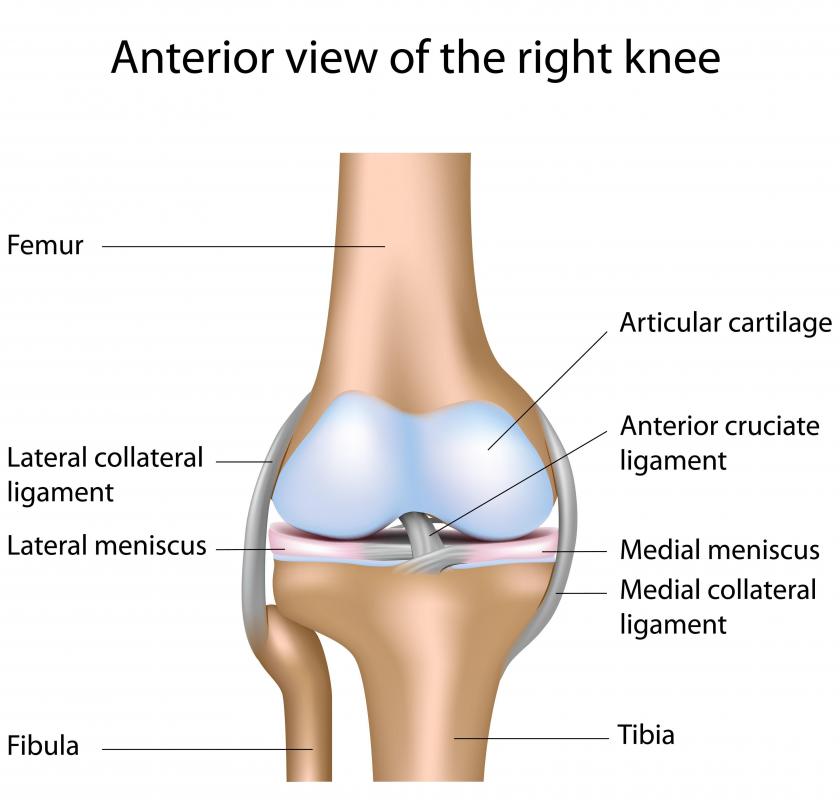At WiseGEEK, we're committed to delivering accurate, trustworthy information. Our expert-authored content is rigorously fact-checked and sourced from credible authorities. Discover how we uphold the highest standards in providing you with reliable knowledge.
What Should I Expect in a Knee Examination?
A knee examination is a medical technique used to determine the health of the knee joint and all of its supporting structures. The knee attaches the lower leg to the thigh and allows the two to work in unison. When examining the knee, the bones of the lower leg and thigh must be evaluated along with the kneecap. The supporting ligaments holding the knee together are also an important part of a knee examination.
The knee attaches the femur or thigh bone to the tibia, the larger shin bone. The thigh bone also connects to the patella or kneecap. Running through it are structures called ligaments. Ligaments are tough cords which hook bones together. The knees also house bursae, or fluid-filled pouches designed to cut down on friction inside the knee joint, and menisci or fibrous pads also utilized to lessen friction especially between the bones of the upper and lower leg.

Problems with the knee can occur with an injury or structural changes caused by arthritis or degenerative conditions. Functional abilities, such as the ability to bear weight on the leg and discrepancies in walking are standard components of a knee examination. Other factors considered when assessing the knee are pain and inflammation or swelling issues and structural abnormalities.

Structural abnormalities include such things as varus and valgus deviations. A varus irregularity is when the knee looks bowed. This occurs when the shin bones nearest the knee arcs out and the ankle curves in. A valgus distortion bends the lower leg closest to the knee inward and the ankle portion outward, giving the appearance of knock-knees. Another deviation presents as a bending of the knee backward or hyper-extended. This condition is called genu recurvatum.

When there is a visible discrepancy in the knee, an important factor to consider during a knee examination is the condition of the ligaments. The medical and lateral collateral ligaments are the inner and outer cable-like structures connecting the upper and lower leg. The anterior and posterior cruciate ligaments connect the thigh and shin. These structures form a cross and are located in the inside of the knee closer to the kneecap.
An injury to the collateral ligaments can be tested during a knee examination by applying a valgus stress test. This involves moving the lower leg out while placing pressure on the foot to see if the ankle area moves away from the body. Testing the cruciate ligaments involves a technique called a draw test. This is performed by bending the knee and moving the tibia or shin bone forward or backward.
Many problems found during a knee examination can be addressed through proper management of acute symptoms and an extensive rehabilitation program. Knee rehabilitation is commonly performed by a physical therapist. Physical therapy can address pain issues and movement difficulties experienced in the knee.
AS FEATURED ON:
AS FEATURED ON:













Discuss this Article
Post your comments